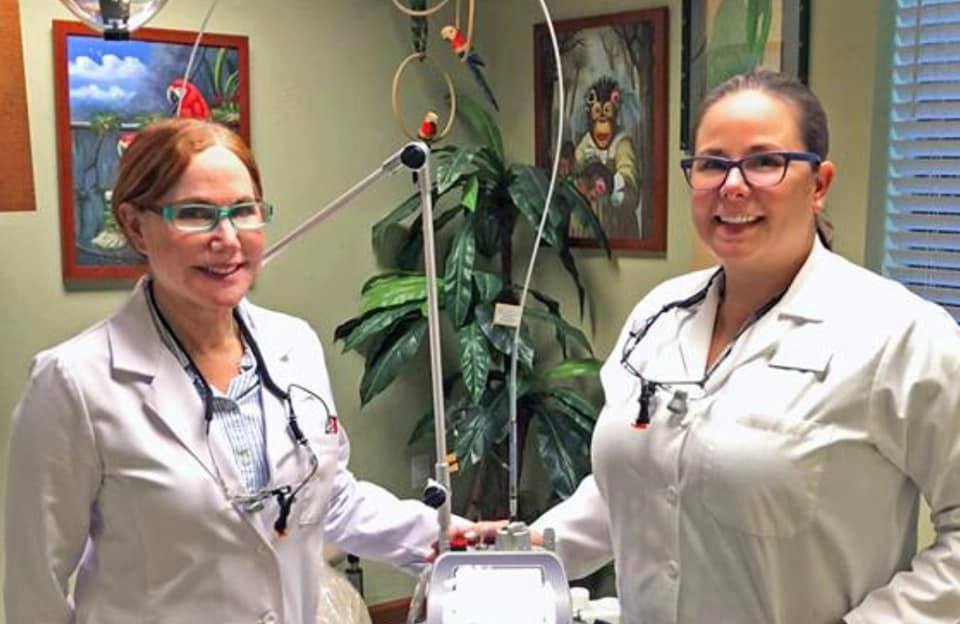What is a Frenectomy?
A frenectomy is the removal of connective tissue (called the frenum) from under the tongue or the upper gums. Dr. Block and Dr. Anderson may recommend having a have a frenectomy completed for certain dental reasons. If your child is experiencing certain types of feeding, speech, or orthodontic problems, you may have been referred to our office for an evaluation. A frenectomy is quick procedure to release the tie, helping to correct these problems and have a functional improvement. New technologies have made frenectomies a safe and convenient option for patients of all ages. Our office uses a LightScalpel CO2 laser which vaporizes the tissue, rather than cutting, and results in little to no bleeding, minimal scar tissue and decreased inflammation.
Dr.Block and Dr. Anderson with the LightScalpel CO2 laser.
In a dental practice, there are two main types of frenectomies:
Lingual Frenectomy
A lingual frenectomy involves removing the tissue connecting the underside of the tongue to the floor of the mouth. Lingual frenectomies are commonly used to correct a condition called Ankyloglossia, otherwise known as a “tongue-tie.” This restriction of tongue movement or function happens with a persistent lingual frenum attachment. It is considered a congenital anomaly reported in 4-5% of the general population.
Lingual Frenectomy - Before
Lingual Frenectomy - After
Maxillary Frenectomy
A maxillary frenectomy involves removing the piece of tissue connecting the upper gums to the front teeth or “lip-tie.” Everyone has some variation of tissue, but sometimes the tissue is excessively large or tight which restricts movement, creating a variety of issues for patients and caregivers.
Maxillary Frenectomy - Before
Maxillary Frenectomy - After
How can a Frenectomy Help?
It is important to determine if the tethered oral tissues, or TOTs, are the actual cause of clinical dysfunction. Dr. Anderson has advanced training in the evaluation and treatment of TOTs. She is unique having received training regarding TOTs evaluation and treatment during her specialty residency, and having shadowed with Dr. Ghaheri, one of the foremost experts in the field. She also attends ongoing continuing education on this subject she is passionate about. Our office strongly believes in a multidisciplinary approach to care and works in conjunction with other healthcare providers and support therapists to achieve the best functional improvement for our patients.
With a multi-disciplinary approach to care, it is possible to address these restrictions that can create difficulties in activities that require tongue and lip mobility, including:
· Oral Hygiene
· Sleep/Airway Obstruction
· Orthodontics/Malocclusion
· Nursing
· Speaking
· Feeding








